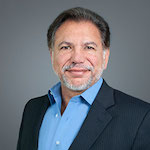Adult Stem Cell Therapy & Platelet Rich Plasma
Arthroscopic Subscapularis Repair Expert
Trained in the U.S. and in Switzerland, Dr. Bennett Was One of the First Surgeons to Perform Arthroscopic Subscapularis Repair Procedures.
Dr. Bennett has been evaluating patients’ shoulders arthroscopically since 1995, after completing a shoulder fellowship in Switzerland in 1993 under the tutelage of world-renown Professor and Surgeon, Dr. Christian Gerber. Dr. Gerber is presently-the head of Orthopedics at the Balgrist Clinic in Zurich, Switzerland. Following, his Fellowship, Dr. Bennett performed a Sportsmedicine Adult Knee and Shoulder fellowship in Los Angeles with Dr. Domenick Sisto of the Blazina Clinic. (The Blazina Clinic was named after Martin Blazina, one of the founders of Sportsmedicine in the United States).
Classification of rotator cuff tears, pulley lesions, and outcomes studies have been performed right here in Sarasota by Dr. Bennett. He was one of the first surgeons performing arthroscopic subscapularis repair and one of the first to present his findings. He presented 2-year follow-up of arthroscopic subscapularis repairs at the ESSKA conference in Nice, France in 1998.
Four (4) tendons make up the rotator cuff tendon system: the supraspinatus, the subscapularis, the infraspinatus and the teres minor. Dr. Bennett documented, as early as 2000, that the subscapularis tendon is involved in rotator cuff pathology at least 40 percent of the time. Since then, he discovered that upper subscapularis tears are even more prevalent, and that with subscapularis tears there is often a pulley lesion associated. These lesions can affect biceps tendon stability.
Many surgeons attempting to treat rotator cuff injuries do not repair of the subscapularis tendon. Dr. Bennett, with his advanced expertise as a leader in shoulder surgery, repairs the subscapularis tendon arthroscopically. Even sixteen years after Dr. Bennett’s discoveries, there are still surgeons who leave this tendon untreated. Patients have entrusted their shoulder care to Dr. Bennett of Bennett Orthopedics, recognizing that he is a pioneer in shoulder and knee procedures, and has extensive experience repairing injuries to enable athletes and other high performing patients to get back in the game.
Arthroscopic repair of isolated subscapularis tears: A prospective cohort with 2- to 4-year follow-up, Arthroscopy 2003.
You deserve the best care. Call (941) 953-5509 or fill out the form on our web page to schedule a consultation with internationally trained and recognized orthopaedic surgeon Dr. William Bennett.
CONCLUSIONS:
The arthroscopic repair of the isolated subscapularis tear provides for reliable expectations of improvement in function, particularly the use of the arm behind the back, decreases in pain, decreases in biceps subluxation or instability, and the return of active normal internal rotation. Subjectively, magnetic resonance arthrography is better than magnetic resonance imaging for visualizing the subscapularis tear.
Arthroscopic repair of massive rotator cuff tears: a prospective cohort with 2- to 4-year follow-up.
Have you been told that you have a rotator cuff tear that is so bad that it can’t be repaired? Are you getting ready for a reverse shoulder replacement? Do you want to keep your own tissue and not undergo shoulder replacement surgery? You have found the right website and practice. Here at Bennett Orthopedics and Sportsmedicine, Dr. Bennett has been repairing rotator cuff tears arthroscopically since 1995.
In fact, Dr.Bennett has never opened a rotator cuff repair surgery. He has published numerous studies on the results of his surgery with very encouraging results. He has classified his outcome results based upon which tendons were torn in the shoulder. In fact he has published a peer-reviewed paper on the outcomes of arthroscopic repair of massive rotator cuff tears.
Actually, Dr. Bennett has noted that most tears deemed non-repairable, are in fact, repairable. Even partial repairs of tendons allow increased function and range of motion and strength. Now if you are 60 or older and a manual laborer and require strength at the level of the shoulder or if your shoulder has pseudo-paralysis, the inability to elevate your arm at all, he will discuss and perform a reverse shoulder replacement.
Yet, in fact he has seen numerous patients who had been told that the rotator cuff tendon was non-repairable or that there was a 50 percent chance or less of repairing it, and has gone on to successfully repair 100 percent of the tear with excellent results and satisfaction.
Between 1997 and 1999, 37 patients underwent complete arthroscopic repair of massive rotator cuff tears. To date, Dr. Bennett has repaired 100s of massive rotator cuff repairs, arthroscopically.
The arthroscopic repair of massive rotator cuff tears is effective for decreasing pain and improving the functional status of the shoulder for most patients. Complete coverage was achieved in 78% of the patients at the time of surgery. A subset of patients who did not have complete coverage or coverage at a second setting showed similar outcomes as those with full coverage. The patient satisfaction rate was 95%.
Give it a go. Come to Bennett Orthopedics and Sportsmedicine.






